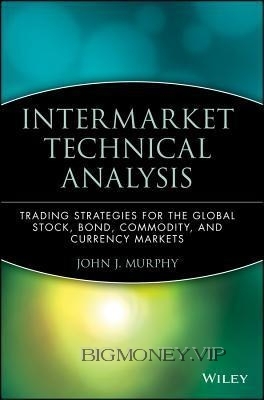
1
A New Dimension
in Technical Analysis
One of the most striking lessons of the 1980s is that all markets are interrelated—
financial and nonfinancial, domestic and international. The U.S. stock market doesn't
trade in a vacuum; it is heavily influenced by the bond market. Bond prices are very
much affected by the direction of commodity markets, which in turn depend on the
trend of the U.S. dollar. Overseas markets are also impacted by and in turn have
an impact on the U.S. markets. Events of the past decade have made it clear that
markets don't move in isolation. As a result, the concept of technical analysis is
now evolving to take these intermarket relationships into consideration. Intermarket
technical analysis refers to the application of technical analysis to these intermarket
linkages.
The idea behind intermarket analysis seems so obvious that it's a mystery why we
haven't paid more attention to it sooner. It's not unusual these days to open a financial
newspaper to the stock market page only to read about bond prices and the dollar. The
bond page often talks about such things as the price of gold and oil, or sometimes
even the amount of rain in Iowa and its impact on soybean prices. Reference is
frequently made to the Japanese and British markets. The financial markets haven't
really changed, but our perception of them has.
Think back to 1987 when the stock market took its terrible plunge. Remember
how all the other world equity markets plunged as well. Remember how those same
world markets, led by the Japanese stock market, then led the United States out of
those 1987 doldrums to record highs in 1989 (see Figure 1.1).
Turn on your favorite business show any morning and you'll get a recap of the
overnight developments that took place overseas in the U.S. dollar, gold and oil,
treasury bond prices, and the foreign stock markets. The world continued trading
while we slept and, in many cases, already determined how our markets were going
to open that morning.
ALL MARKETS ARE RELATED
What this means for us as traders and investors is that it is no longer possible to
study any financial market in isolation, whether it's the U.S. stock market or gold
futures. Stock traders have to watch the bond market. Bond traders have to watch
the commodity markets. And everyone has to watch the U.S. dollar. Then there's the
Japanese stock market to consider. So who needs intermarket analysis? I guess just
about everyone; since all sectors are influenced in some way, it stands to reason that
anyone interested in any of the financial markets should benefit in some way from
knowledge of how intermarket relationships work.
IMPLICATIONS FOR TECHNICAL ANALYSIS
Technical analysis has always had an inward focus. Emphasis was placed on a par-
ticular market to which a host of internal technical indicators were applied. There




